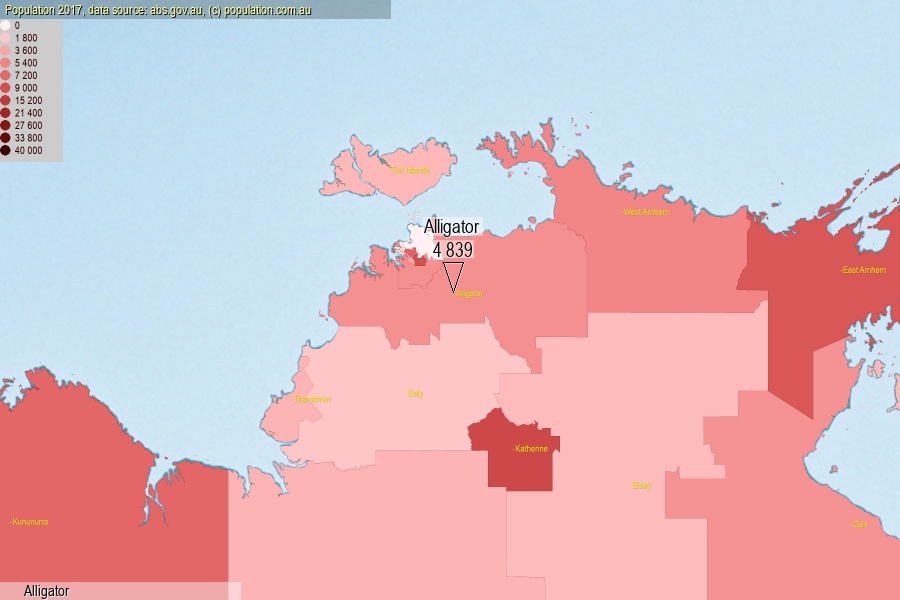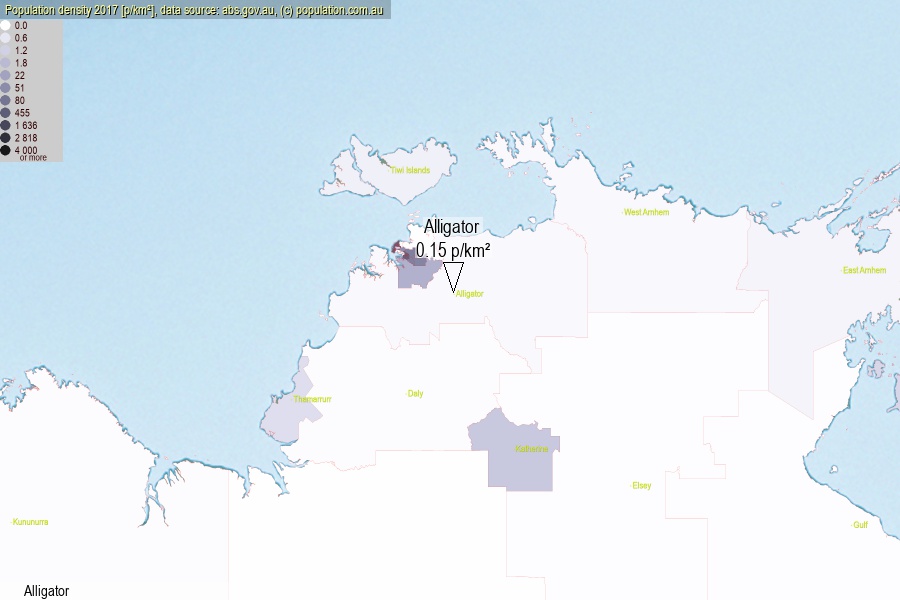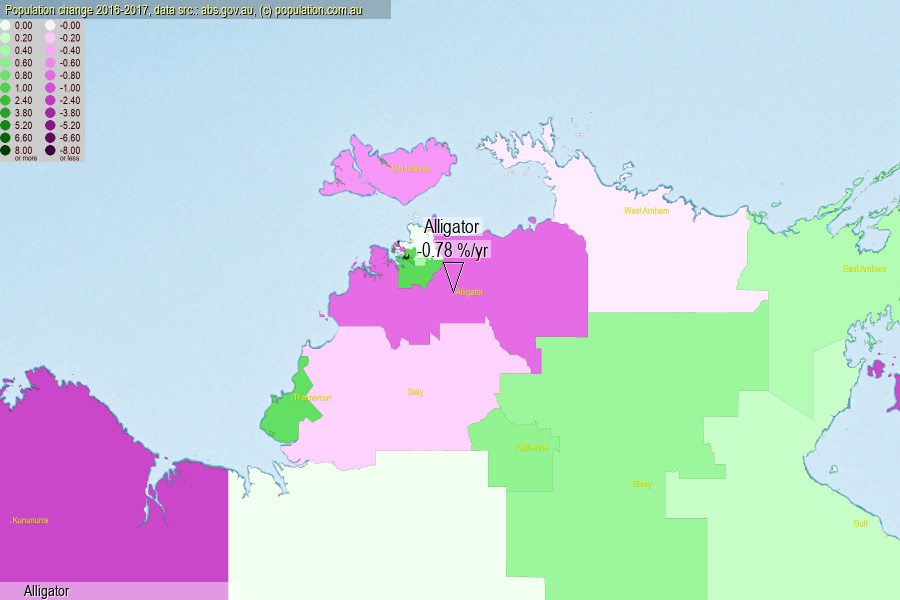 population.com.au
population.com.auLast official estimated population of Alligator (as Statistical Area Level 2) was 4 839 people (on 2017-06-30)[2]. This was 0.02% of total Australian population and 1.962% of NT population. Area of Alligator is 33 100.70 km², in this year population density was 0.15 p/km² . If population growth rate would be same as in period 2016-2017 (-0.78%/yr), Alligator population in 2025 would be 4 545. [0]



Click to enlarge. Alligator is located in the center of the images.
Population [people], population density [p./km²] and population change [%/year] [2]
View borders » (new window) [4]
[1991-1992] +0.83 %/Yr.
[1992-1993] +2.28 %/Yr.
[1993-1994] +2.37 %/Yr.
[1994-1995] +3.21 %/Yr.
[1995-1996] +4.18 %/Yr.
[1996-1997] +2.54 %/Yr.
[1997-1998] +0.64 %/Yr.
[1998-1999] -2.06 %/Yr.
[1999-2000] -3.72 %/Yr.
[2000-2001] -2.59 %/Yr.
[2001-2002] -0.26 %/Yr.
[2002-2003] +1.40 %/Yr.
[2003-2004] +1.15 %/Yr.
[2004-2005] +2.09 %/Yr.
[2005-2006] +2.94 %/Yr.
[2006-2007] +2.71 %/Yr.
[2007-2008] +3.29 %/Yr.
[2008-2009] +3.80 %/Yr.
[2009-2010] +3.01 %/Yr.
[2010-2011] +2.11 %/Yr.
[2011-2012] +1.08 %/Yr.
[2012-2013] +1.68 %/Yr.
[2013-2014] -1.37 %/Yr.
[2014-2015] -0.02 %/Yr.
[2015-2016] -0.37 %/Yr.
[2016-2017] -0.78 %/Yr.
[0] Calculated with linear interpolation from officially estimated population
[1] Read more about SA2 and Australian Statistical Geography Standard (ASGS) on abs.gov.au
[2] Population data from Australian Bureau of Statistics (Population and density: 2017; change: 2016-2017)
[3] Digital Boundaries: Australian Statistical Geography Standard (ASGS) 2016.
[4] Border coordinates are simplifyed using Ramer-Douglas-Peucker algorithm.